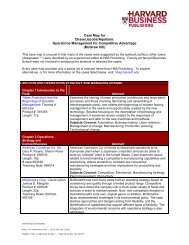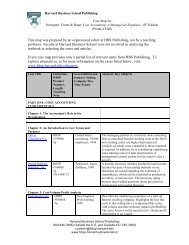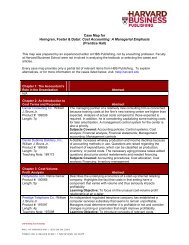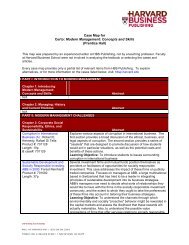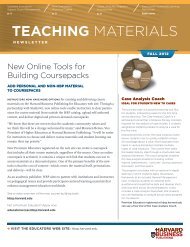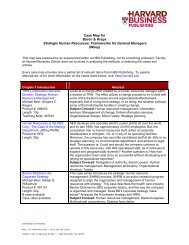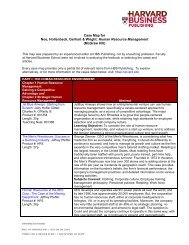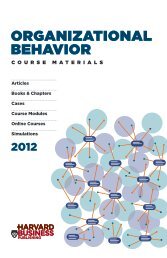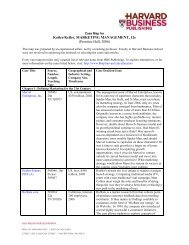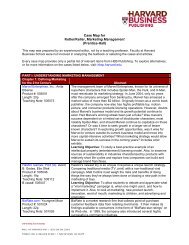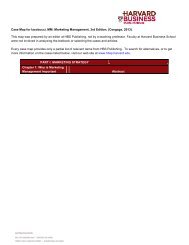Company Valuation Using Discounted Cash Flow
Company Valuation Using Discounted Cash Flow
Company Valuation Using Discounted Cash Flow
You also want an ePaper? Increase the reach of your titles
YUMPU automatically turns print PDFs into web optimized ePapers that Google loves.
Seagate. Students are asked to perform both WACC-based DCF and APV valuations of the target<br />
(including estimating the cost of capital from comparables) as well as address the impact of financing<br />
decisions of on value. The supplementary HBR article, “<strong>Using</strong> APV: A Better Tool for Valuing Operations,”<br />
describes an APV analysis using a hypothetical company.<br />
Section 4 is concerned with the capital cash flow method. In Berkshire Partners: Bidding for Carter’s,<br />
Berkshire Partners is making a bid and deciding on a financial structure for an LBO of a leading producer<br />
of children’s apparel. Berkshire’s financial team uses capital cash flow to calculate the value of William<br />
Carter Co.The students are also asked to consider how value is created in the private equity world. Note<br />
on Capital <strong>Cash</strong> <strong>Flow</strong> <strong>Valuation</strong>, the supplement, walks students through the mechanics of the<br />
calculation.<br />
Section 5, on the equity cash flow (ECF) method, closes the module with Acova Radiateurs, a takeover<br />
candidate that students must value for an LBO in an international setting. The teaching note provides<br />
one- and two-day teaching plans and ECF and CCF valuations of Acova. The alternative, The Hertz<br />
Corporation (A), is a more difficult case, examining the LBO of Hertz in 2005. Students are asked to<br />
locate the sources of value in the deal, in operations, and in the financing and deal structures. While the<br />
case itself lacks detailed financial projections, both the teaching note and an electronic spreadsheet<br />
include sample projections. The supplement, Note on Valuing Equity <strong>Cash</strong> <strong>Flow</strong>s, is for advanced<br />
students and teaches the mechanics and examines the biases and shortcomings of the method.<br />
As capstones, you might want to consider two HBP online simulations, Finance Simulation:<br />
Blackstone/Celanese and Finance Simulation: M&A in Wine Country. The former is based on the<br />
landmark acquisition of Celanese AG by the Blackstone Group in 2003, and asks students within the<br />
greater context of the case to use equity and capital cash flow methods to give a valuation to Celanese<br />
AG. In the second online simulation, students play the role of the CEO at one of three-publicly traded<br />
wine producers, evaluating merger and/or acquisition opportunities among the three companies. WACCbased<br />
DCF, APV, and Market Multiples are some of the methods at their disposal to work up bids and<br />
negotiate deals.



